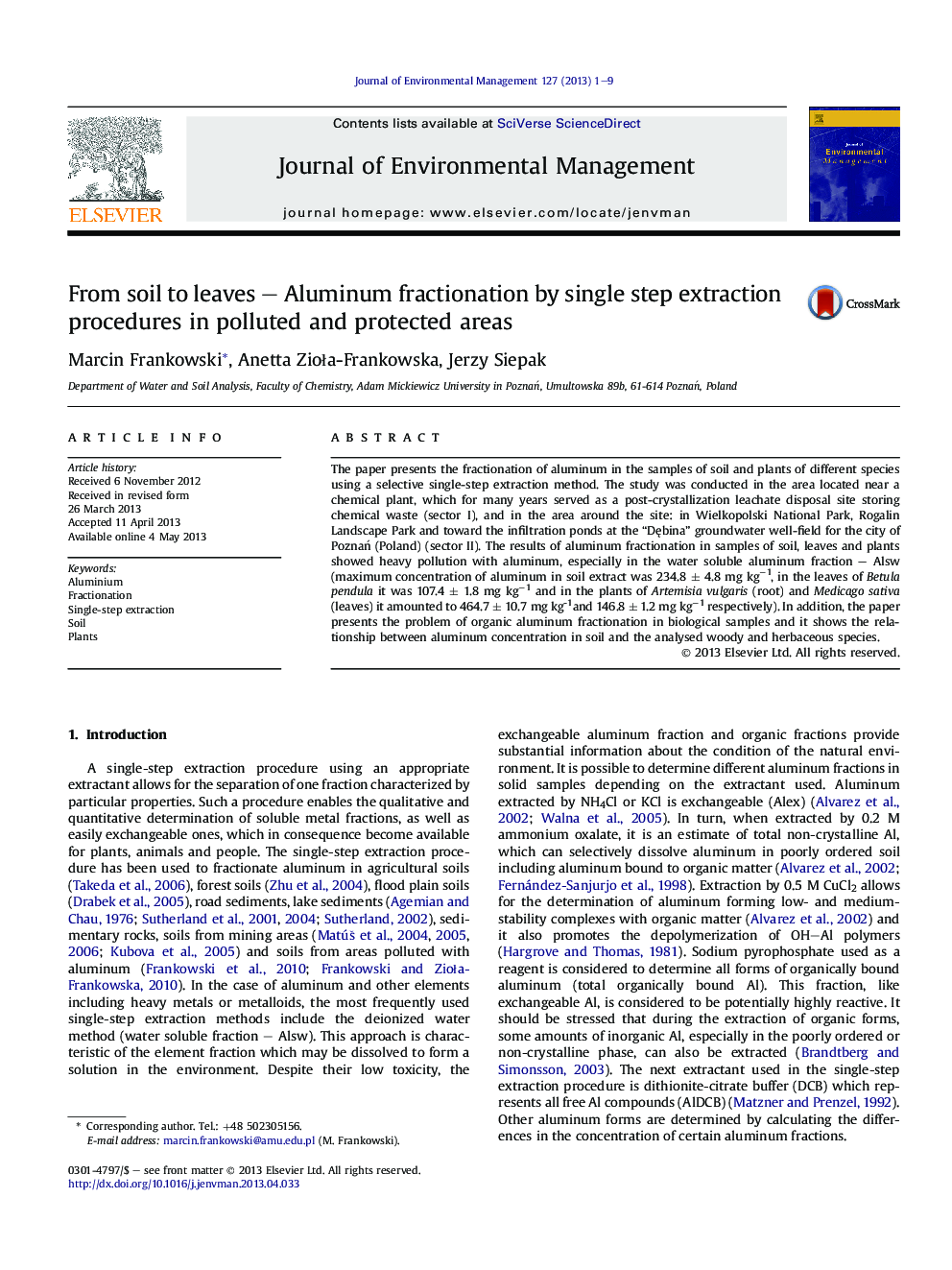| Article ID | Journal | Published Year | Pages | File Type |
|---|---|---|---|---|
| 1056000 | Journal of Environmental Management | 2013 | 9 Pages |
Abstract
The paper presents the fractionation of aluminum in the samples of soil and plants of different species using a selective single-step extraction method. The study was conducted in the area located near a chemical plant, which for many years served as a post-crystallization leachate disposal site storing chemical waste (sector I), and in the area around the site: in Wielkopolski National Park, Rogalin Landscape Park and toward the infiltration ponds at the “DÄbina” groundwater well-field for the city of PoznaÅ (Poland) (sector II). The results of aluminum fractionation in samples of soil, leaves and plants showed heavy pollution with aluminum, especially in the water soluble aluminum fraction - Alsw (maximum concentration of aluminum in soil extract was 234.8 ± 4.8 mg kgâ1, in the leaves of Betula pendula it was 107.4 ± 1.8 mg kgâ1 and in the plants of Artemisia vulgaris (root) and Medicago sativa (leaves) it amounted to 464.7 ± 10.7 mg kg-1and 146.8 ± 1.2 mg kgâ1 respectively). In addition, the paper presents the problem of organic aluminum fractionation in biological samples and it shows the relationship between aluminum concentration in soil and the analysed woody and herbaceous species.
Keywords
Related Topics
Physical Sciences and Engineering
Energy
Renewable Energy, Sustainability and the Environment
Authors
Marcin Frankowski, Anetta ZioÅa-Frankowska, Jerzy Siepak,
